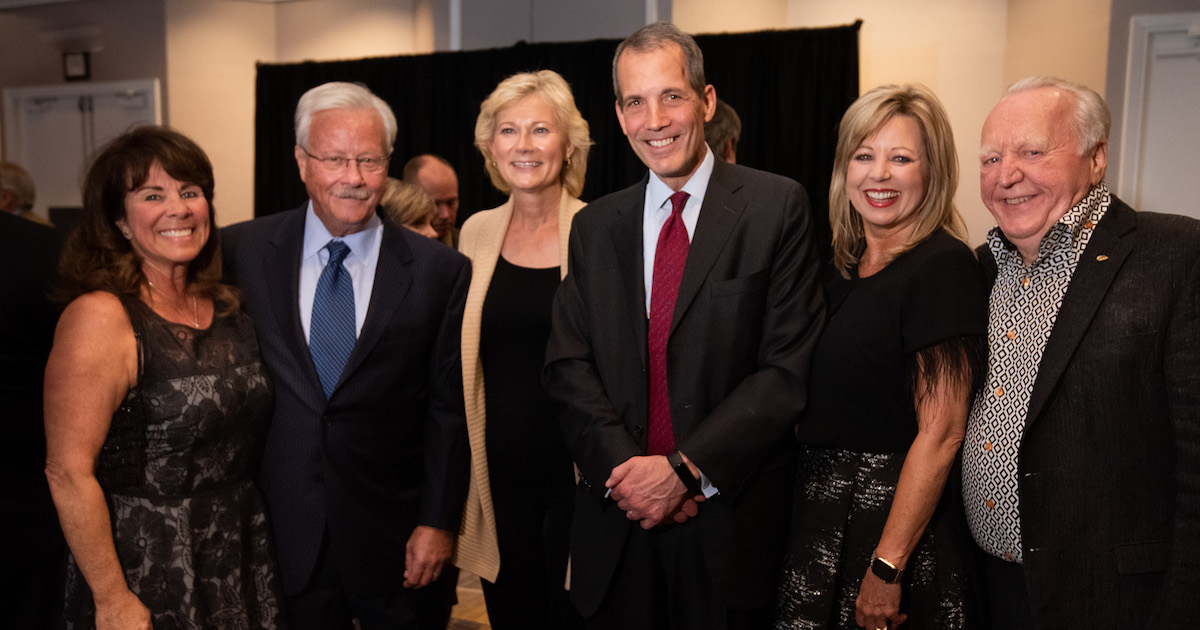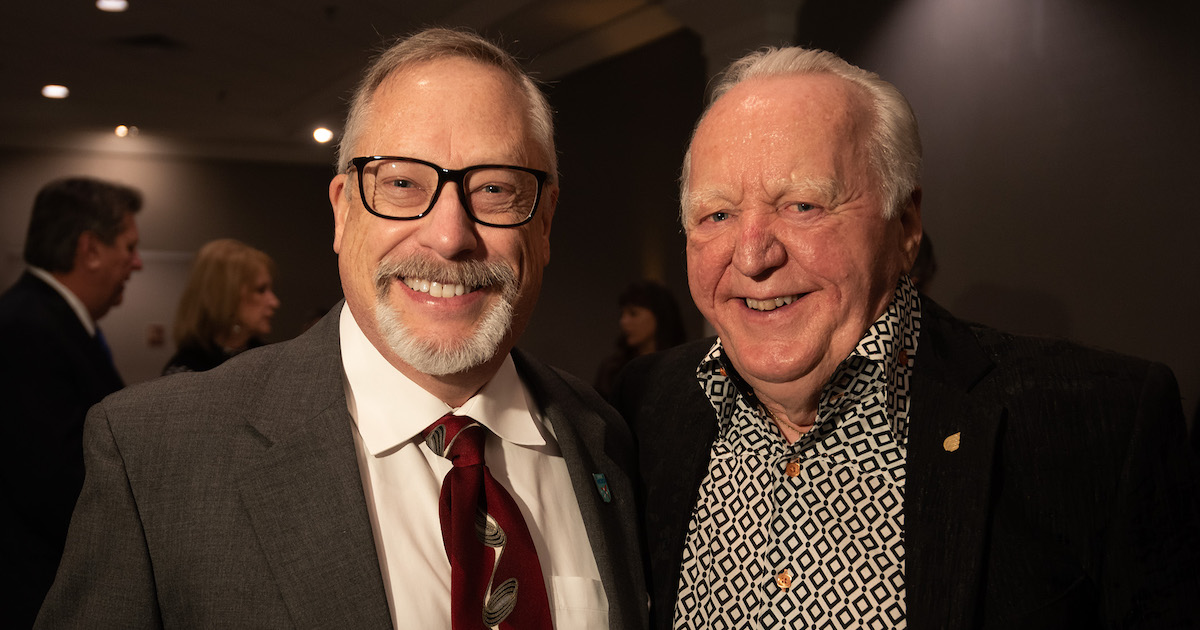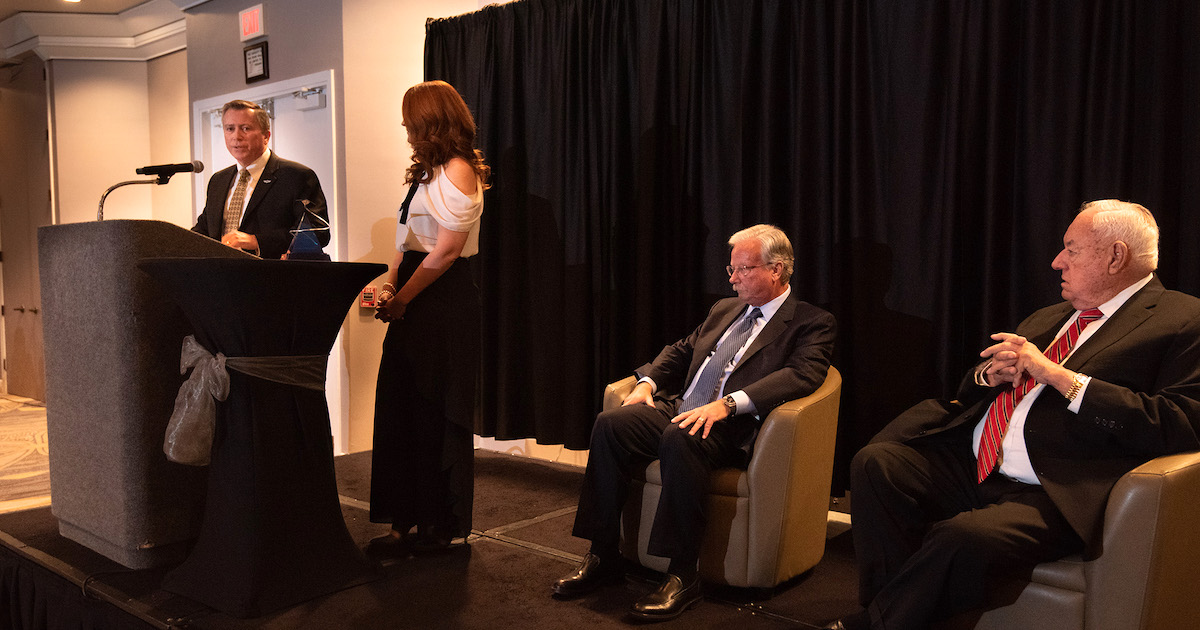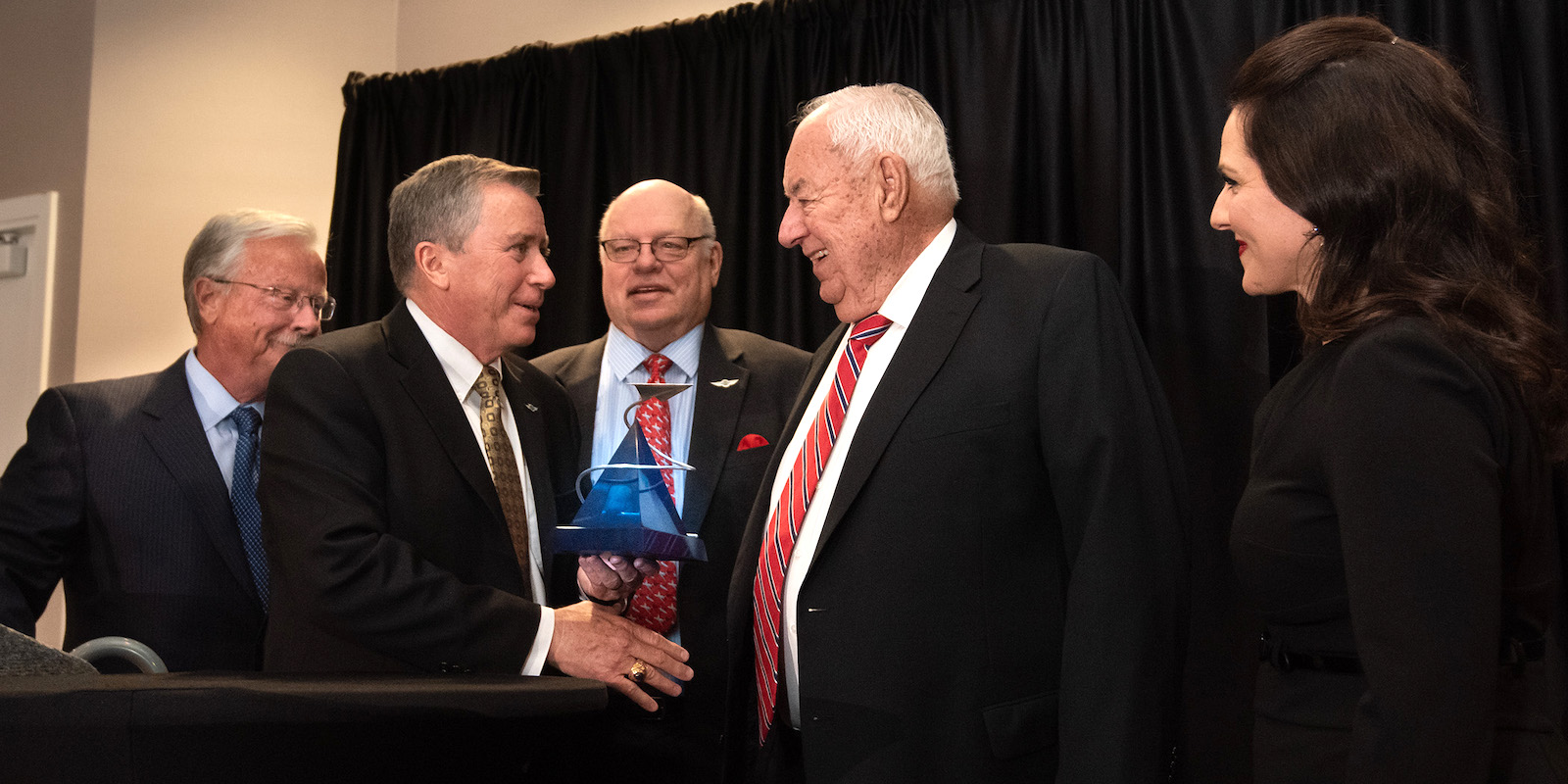Eyes-to-the-Sky Trailblazer
01.27.20 · Ashley Bowen Cook
The aviation industry needs to come up with its version of the EGOT, an acronym for winning the Emmy, Grammy, Oscar and Tony awards. As it stands, there’s no single descriptor that encompasses Clay Lacy’s multi-pronged contribution to the aviation industry: airline captain, military aviation, experimental test pilot, air race champion, world record-setter, aerial cinematographer and business aviation entrepreneur. The Wichita Aero Club honored Lacy as this year’s trophy winner at its gala January 25.
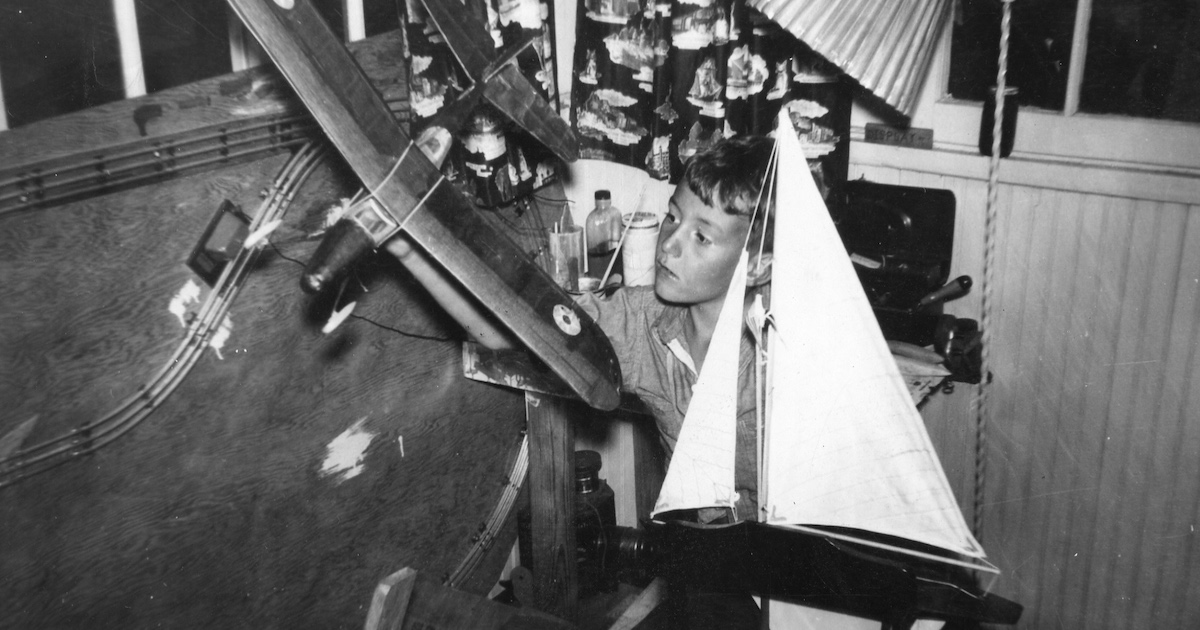
Wichita served as Lacy’s springboard to the sky. He started flying when he was only 12 by paying for instruction and flight time by working at Cannonball Airport, on his grandmother’s farm outside of Wichita. His first flight was in a Beechcraft Staggerwing. Lacy became a flight instructor and, in 1952 at age 19, he left the Air Capital for LA to become a United Airlines DC-3 copilot. Two years later, he took leave from the airline to pilot F-86 Sabre Jets for the California Air National Guard. In 1956 he met Bill Lear, a connection that would later change more than his career.
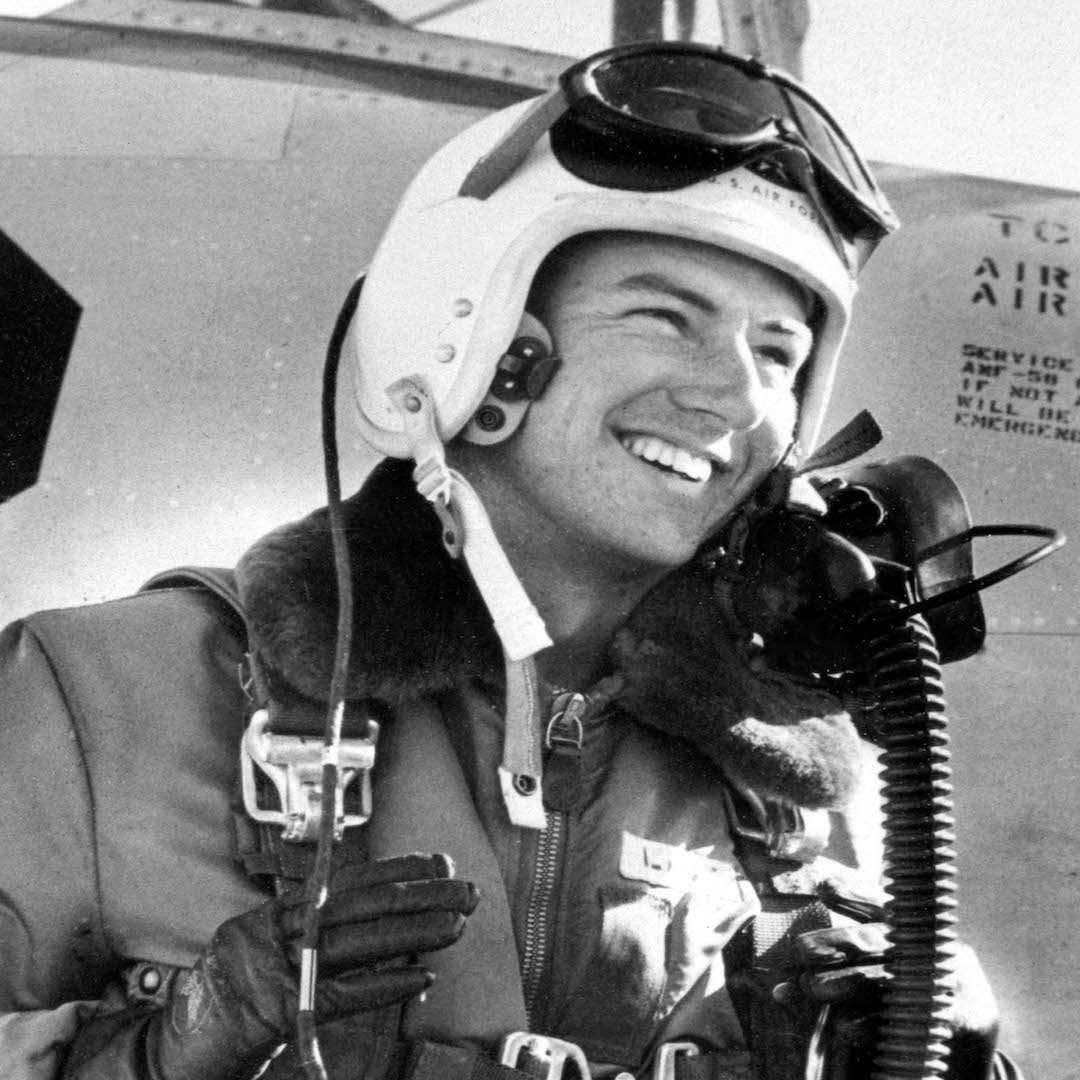
From the Moon to Movie Stars
In 1961, Lacy spent a year in active military duty as chief standardization pilot on the Boeing C-97 Stratofreighter. He flew missions to Japan and Vietnam. In 1962, he played a key role in America’s race to space. He test flew the Pregnant Guppy, a modified Boeing 377 that transported the S-IV Saturn I rocket booster, integral to putting man on the moon.

The relationship with Lear came into play in 1964 when Lacy became its distributor for 11 western states. He flew the first Learjet into LA’s Van Nuys Airport. Four years later, in 1968, he founded Clay Lacy Aviation, the West Coast’s first jet charter and executive jet management company. Hollywood’s biggest names wanted this sleek, new time machine. Frank Sinatra used his Learjet 23 to whisk Rat Pack buddies, Elvis, Mia Farrow and others to parties and premieres. Their social cachet helped launch the globetrotting jet set.
Early on, Lacy knew a business jet was also a workhorse. In his book Lucky Me, he says, “If the world’s decision makers did not have corporate aviation, we’d be ten years behind.”
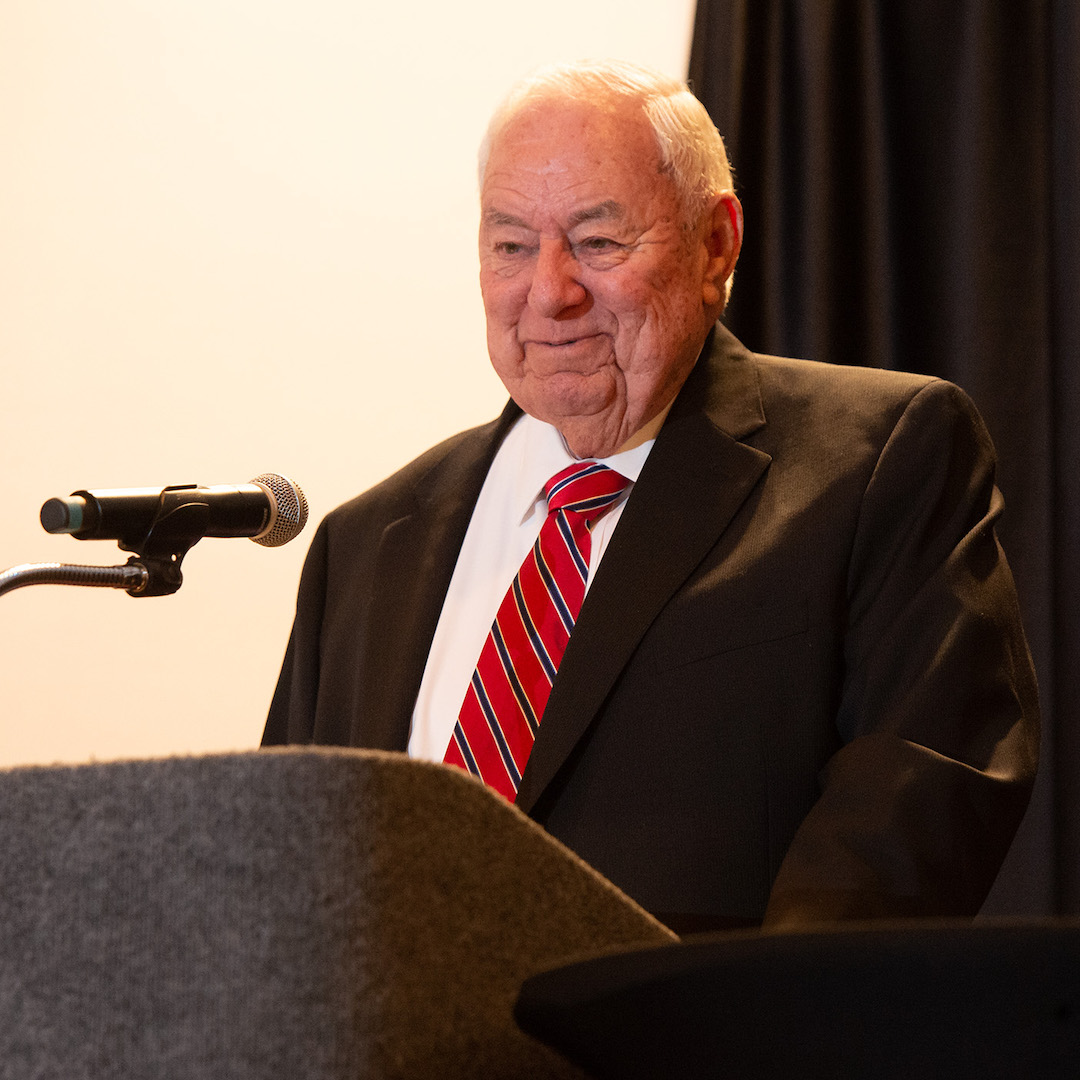
A Race to Innovate
Lacy never seemed to slow down or coast. He raced his P-51 Mustang at events throughout the United States, winning the 1970 Reno Air Race. Partnering with Continental Camera Systems, in 1975 he developed the revolutionary Astrovision camera system. While he’s credited with more than 3,000 film projects, we probably know the air-to-air camera work most in such movies as Top Gun and Armageddon. He earned a reputation as the world’s leading aerial cinematographer.
Foresight Backed by Gumption
Under his leadership, Clay Lacy Aviation opened the world’s first all-jet FBO in 1981 at Van Nuys Airport. Within three years it doubled in size. It went on to introduce ultra-long-range business jet travel to U.S. charter clients with the Gulfstream GV in 1998 then the first Boeing Business Jet (BBJ) in 1999. The company expanded in 2002 with a full-service FBO and jet center at Seattle’s Boeing Field.
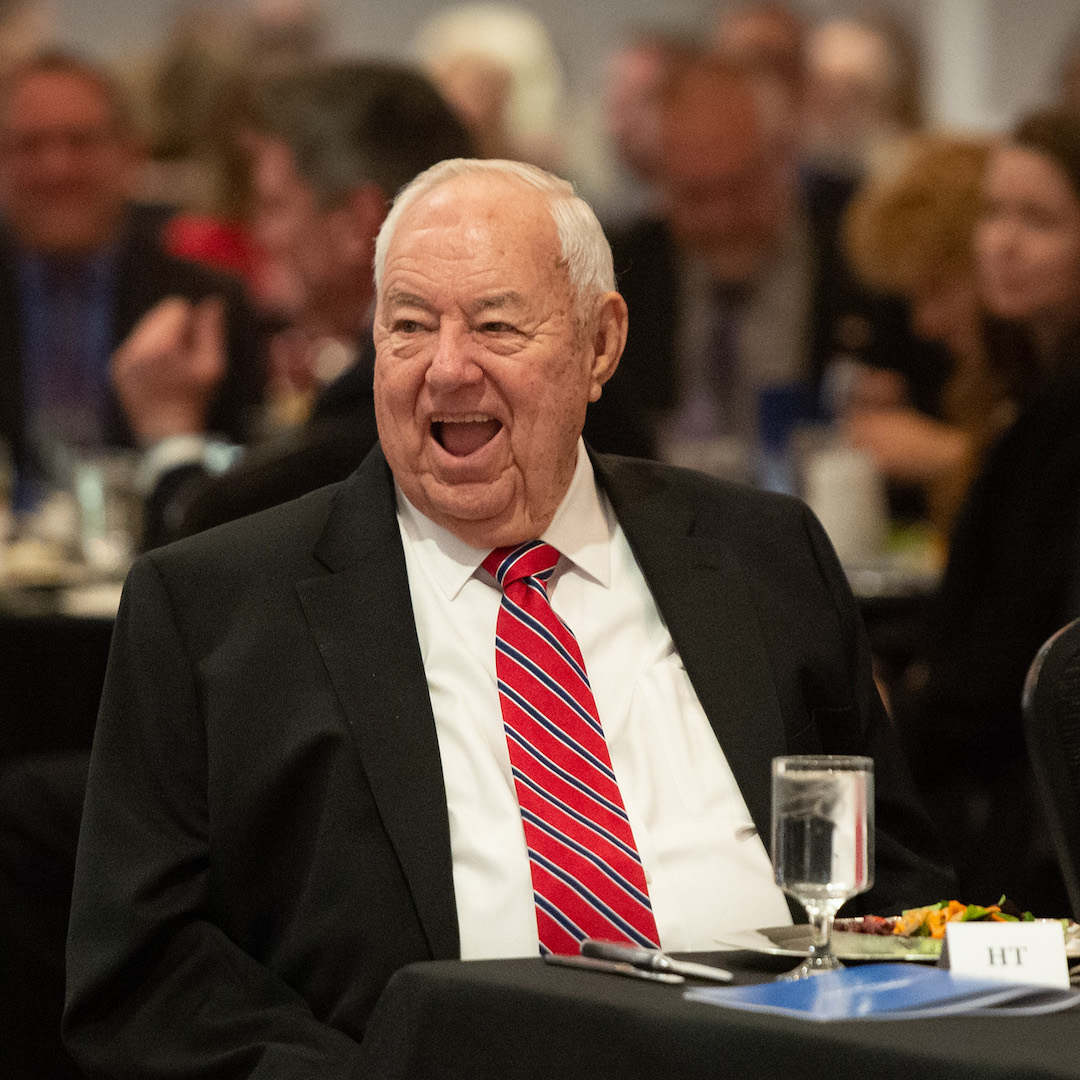
Lacy’s storied aviation career includes winning 29 world speed records, flying more than 300 different types of aircraft and logging more than 50,000 flight hours. He amassed more flight hours in turbine-engine aircraft than any pilot in history. When he retired from United Airlines in 1992, he had logged more than 41 years of incident-free flying.
A Salute to Service
Lacy continues to contribute to aviation. He donated to the Smithsonian National Air and Space Museum F. Udvar-Hazy Center near Dulles international Airport. Closer to home, he contributed to the restoration and operation of Wichita’s restored B-29 Superfortress, Doc, and served as a trusted, firsthand reference for Greteman Group’s book, Wichita: Where Aviation Took Wing.
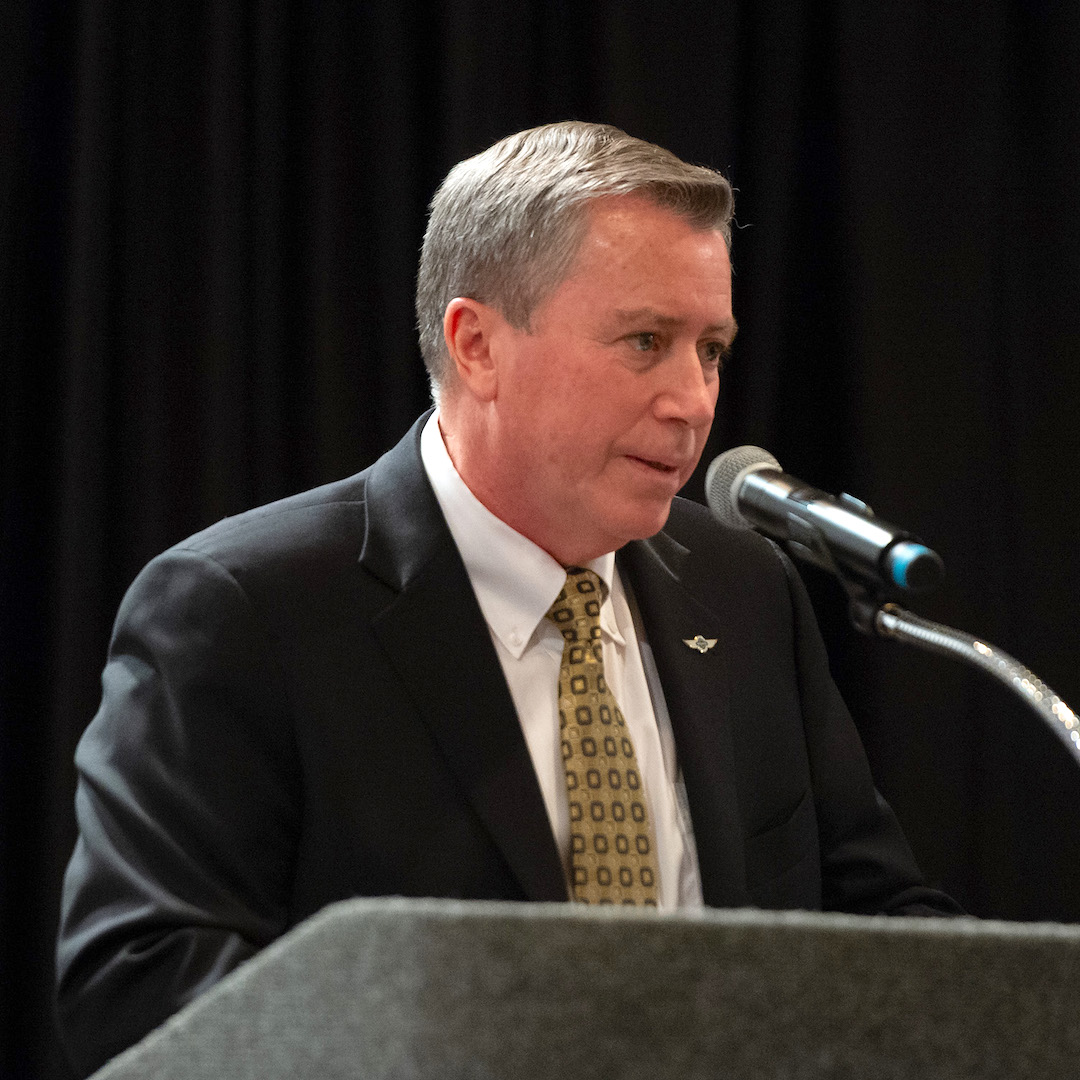
Clay has been awarded almost every aviation honor imaginable, but he concluded the evening by saying this award from his hometown means “a lot, probably more than any other award in the past.” It was here that he learned about aircraft and to have confidence in himself. That first flight as a kid spawned his early and lasting love of aviation. “Wichita looked so beautiful from the air, I thought, this is the way to see the world.” Of his illustrious career he credited his hometown, saying, “It’s all because of Wichita.”
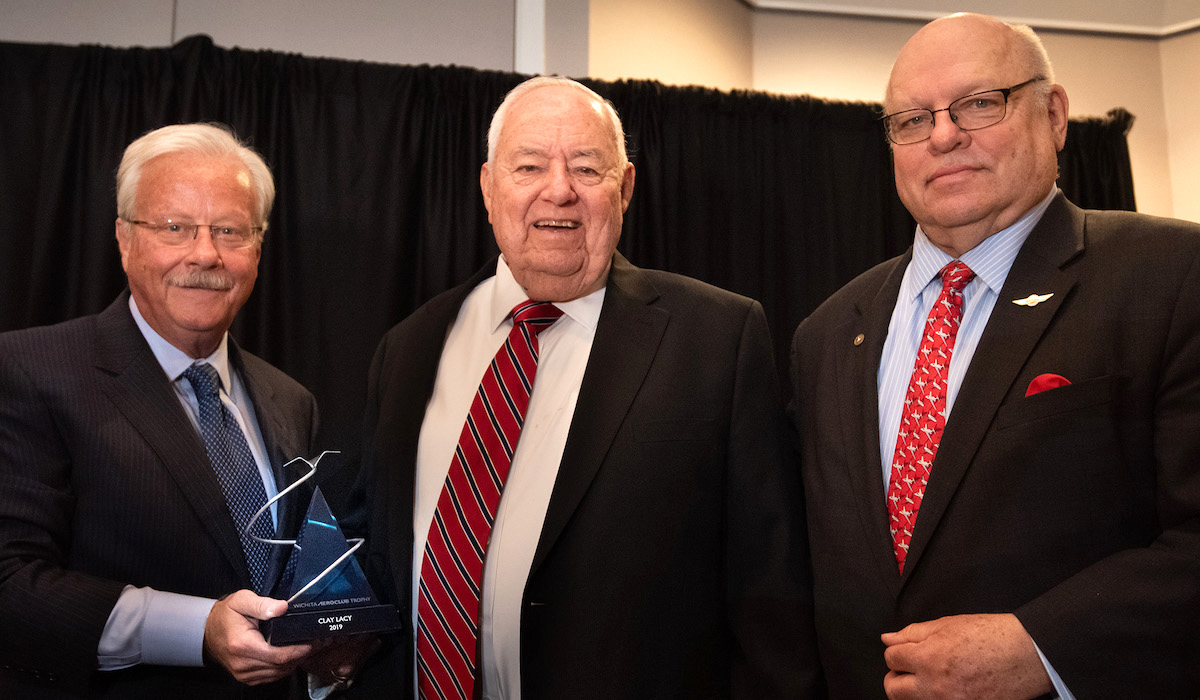
Lacy is a most worthy recipient of this Air Capital honor. Congratulations, sir. You make Wichita proud.
